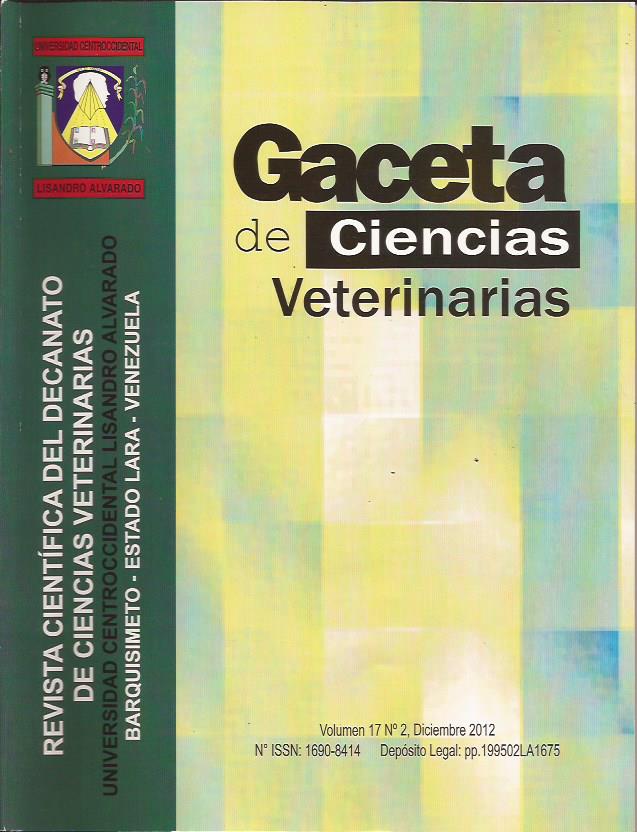Collection and referral of samples for the diagnosis of foot-and-mouth disease in Venezuela
Keywords:
Foot-and-Mouth Disease Virus, samplingAbstract
Foot-and-mouth disease (FMD), one of the most transmissible viral diseases of animals, is of great economic importance due to its impact on the production and international trade of animals and their products. In Venezuela, the disease still persists with endemic circulation throughout its territory. As it is indistinguishable from other vesicular diseases and other diseases confusable with FMD, its definitive diagnosis is made by laboratory, which in turn is very important for eradication campaigns to initiate the application of control measures that will prevent further spread of the disease. In Venezuela, in the framework of the attention of the suspected outbreak to FMD (cases sampled), is presented the situation in which the causal agent of the suspected disease is not determined (unconfirmed cases), being reported as negative to FMD and other diseases vesicular and / or confusable with FMD. Among the causes of absence of confirmation by laboratory is the remission of unsatisfactory samples. As a contribution to the national eradication program, the work includes a review of manuals for collection and referral of samples and addresses some aspects related to sampling for the diagnosis of FMD in Venezuela, of importance in the improvement of performance in the sampling and, consequently, in the diagnosis, attention and control of the outbreaks, and more accurate estimation of the incidence of the disease in the country.
Downloads
References
Ley de Salud Agrícola Integral. Gaceta Oficial de la República Bolivariana de Venezuela N° 5.890 Extraordinario, de fecha 31 de Julio de 2008. Disponible en:http://www.fao.org/pgrfa-gpa-archive/ven/ley_salud_int.pdf.
Gaceta Oficial de la República Bolivariana de Venezuela. Número40.330.09_01. 9 de enero de 2014. Normas para el Programa Nacional de Vigilancia, Prevención, Control y Erradicación de la Fiebre Aftosa.Disponible en: http://www.fedeagro.org/fotos/file/leyesagricolas/PlanAftosa.pdf
Longjamn., Deb R., Sarmah A.,Tayo T., Awachat V., SaxenaV..Brief Review on Diagnosis of Foot-and-Mouth Disease of Livestock: Conventional to Molecular Tools. Veterinary Medicine International, Volume 2011, Article ID 905768, 17 pages.
Organización Mundial de Sanidad Animal (OIE).Foot and Mouth Disease (Infection with Foot and Mouth Disease Virus).Chapter2.1.8., 2017.Disponibleen: http://www.oie.int/fileadmin/Home/eng/Health_standards/tahm/2.01.08_FMD.pdf
Díaz T., Barrero D., Del Barrio L. Guía para la Atención de Focos de Fiebre Aftosa. Organización de las Naciones Unidas para la Alimentación y la Agricultura (FAO). 2013. Disponible en: http://www.fao.org/3/a-i3168s.pdf
Informe de Situación de los Programas de Erradicación de la Fiebre Aftosa Sudamérica y Panamá año 2013. PANAFTOSA. 2013. Disponible en:http://bvs1.panaftosa.org.br/local/File/textoc/Sit2013.pdf
Informe de Situación de los Programas de Erradicación de la Fiebre Aftosa en Sudamérica y Panamá en 2014. PANAFTOSA. 2014.Disponible en: http://www.fao.org/3/a-i3168s.pdf
Informe de Situación de los Programas de Erradicación de la Fiebre Aftosa en Sudamérica y Panamá en 2015. PANAFTOSA. 2015. Disponible en: http://bvs1.panaftosa.org.br/local/File/textoc/Sit2015esp.pdf
Informe de situación de los Programas de Erradicación de la Fiebre Aftosa en Sudamérica y Panamá en 2016. PANAFTOSA. 2016. Disponible en http://panaftosa.org/cosalfa44/dmdocuments/Informe_Situacion_Paises_2016_[300317]pdf
DarsiegC., Dos ReisJ. L., Allende R. Procedimiento para colecta y remisión de muestras para el diagnóstico de enfermedades vesiculares y su diagnóstico diferencial. Centro Panamericano de Fiebre Aftosa- Organización Panamericana de la Salud (PANAFTOSA-OPS). 2012.Disponible en: http://www.paho.org/panaftosa/index.php?option=com...gid.
MaliratV., y Bergmann I.. Instrumentos moleculares para caracterización viral MANUAL RT-PCR y secuenciamiento cíclico para estudios de epidemiología molecular del virus de la Fiebre Aftosa. Serie de manuales didácticos „ nº 17.
PANAFTOSA. 2003. Disponible en: http://bvs1.panaftosa.org.br/local/File/textoc/SerManDid17.pdf
GenoveseM. A., Saraiva V., Bergmann I., Naranjo J., Pompei J., Darsie G., et al. Manual de Procedimientos para la Atención de Ocurrencias de Fiebre Aftosa y otras Enfermedades Vesiculares. Serie de Manuales Técnicos No. 9.PANAFTOSA–OPS/OMS. 2007. Disponible en: http://www.panaftosa.org.br/salsit_cad/docs/Doc2007248e.pdf
Manual de Procedimientos para la Atención de un Predio donde ocurre Fiebre Aftosa. Serie de manuales técnicos nº 1. Rev. 1. 1994. Disponible en: http://bvs1.panaftosa.org.br/local/File/textoc/Ser%20Man%20Tec%201%20rev1%20CPFA.pdf.
Díaz L.E. Diagnóstico Diferencial en Fiebre Aftosa.. 1ed. Editorial Capital Intelectual S.A. Argentina. 2008.
Bergmann I., Instrumentos diagnósticos para la vigilancia de la Fiebre Aftosa. PANAFTOSA. 2003. Disponible en: http://bvs1.panaftosa.org.br/local/file/textoc/Seminario2003-p11-16Bergmann.pdf
MOONEN P, Schrijver R. (2000). Carriers of foot-and-mouth disease virus: A review. Veterinary Quarterly. 22(4), 193-197.
Alexandersen S, Zhang Z, DonalsonA.. Aspect of the persistence of foot-and-mouth disease virus in animals. The carriers problem. 2002. Microbes Infect. Aug 4 (10): 1099-1110.
Machín C, Medina G, Perez C, Lopez J. Genetic diversity of foot-and-mouth disease virus serotype A in Venezuela, (2001-2013). Zootecnia Trop., 34 (3): 191-200. 2016.
Published
How to Cite
Issue
Section

This work is licensed under a Creative Commons Attribution-NonCommercial-ShareAlike 4.0 International License.
Gaceta de Ciencias Veterinarias se apega al modelo Open Access, por ello no se exige suscripción, registro o tarifa de acceso a los usuarios o instituciones. Los usuarios pueden leer, descargar, copiar, distribuir, imprimir y compartir los textos completos inmediatamente después de publicados, se exige no hacer uso comercial de las publicaciones. Para la reproducción parcial o total de los trabajos o contenidos publicados, se exige reconocer los derechos intelectuales de los autores y además, hacer referencia a esta revista. La publicación de artículos se hace sin cargo para los autores. Los trabajos pueden consultarse y descargarse libremente, y de manera gratuita, en extenso en versión digital, desde su enlace Web institucional. Los textos publicados son propiedad intelectual de sus autores. Las ideas, opiniones y conceptos expuestos en los trabajos publicados en la revista representan la opinión de sus autores, por lo tanto, son estos los responsables exclusivos de los mismos.



